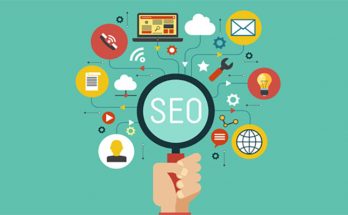The key to a successful SEO strategy is to know your target audience and determine what they want. This involves developing an SEO strategy to attract the right type of audience and optimize the website to meet their needs. To ensure maximum visibility, you must understand your target audience’s needs and stay abreast of the latest SEO news. To improve your SEO strategy, you must follow certain best practices such as optimizing the media files before uploading. This will help your website rank higher on the major search engines.
Off-page SEO
Off-page SEO involves the creation of links. There are two main types of links: natural and artificial. Natural links are derived from websites that link to yours by natural means. These links can be from other websites that you follow or from other websites that link to yours as a result of a search. Natural links improve your site’s authority and user experience. Links from reputable websites are also used in search rankings by Google.
Off-page SEO is as important as on-page SEO for your website. To increase your rankings, you need to create and maintain high-quality links. More difficult links are worth more than easy ones. Also, keep in mind that your website’s content must be of the highest quality possible. By implementing the above tips, you will be well on your way to SEO success. You can also learn about different strategies for link building.
On-page optimization
In a nutshell, on-page optimization is the first step in an SEO strategy. Your content should be optimized to provide as much value as possible to the search engine, which will in turn rank your page higher. While this approach will not guarantee top rankings, it is a necessary first step. It will help improve your site’s experience for readers and search engine robots. Here are a few ways you can optimize your content:
Check the URL structure: Search engines look at the structure of a website and consider the length of a URL to determine whether it’s worth ranking for a keyword. Pages without content should also have the robots metatag “noindex,” which prevents them from appearing in search results. Usability: Usability is the main factor in web design today. Avoid complicated graphics and replace them with simple graphics. A website’s response time can be greatly improved by using a good server-side optimization tool.
Long-tail keywords
Creating a keyword list and arranging them in a logical order will help you optimize your page for long-tail keywords. Your first step in this process is to write down your mission and then make a list of possible keywords. To find these, think about what your audience needs, and what they might be searching for. While head keywords and main topics are relatively easy to find, long-tail keywords can be more difficult to come up with. A plugin will help you make lists of long-tail keywords and their variations.
Long-tail keywords are a great way to attract more targeted traffic. These keywords are conversational and descriptive and focus on a specific product or service. For example, if your company makes human-grade organic dog food, you might use long-tail keywords like “human-grade organic dog food.” People who search for that product will likely be more likely to click through to your website, which will improve your ranking on Google. Long-tail keywords are also less expensive than broad, generic terms, meaning they can bring in more qualified traffic.
Inbound marketing
Inbound marketing strategies must be centered around human behavior. With the rise of online shopping, content consumption, and buying and selling becoming more seamless, understanding human behavior has never been more important. To develop an effective inbound marketing strategy, you must consider your target buyer’s behavior and engagement patterns. In today’s increasingly digital age, most people use the internet to find information and solve their problems. If you can create content that addresses these needs, you can increase your chances of converting those leads into customers.
Content quality is just as important as keyword density. A high EAT is a measurement by Google that determines how readable a page is. If a user reads and engages with the content, it means it will be successful. Therefore, your content should be as human as possible. Inbound marketing strategies should aim to satisfy customers’ needs and desires. Besides SEO, inbound marketing strategies must include on-page and technical SEO.





